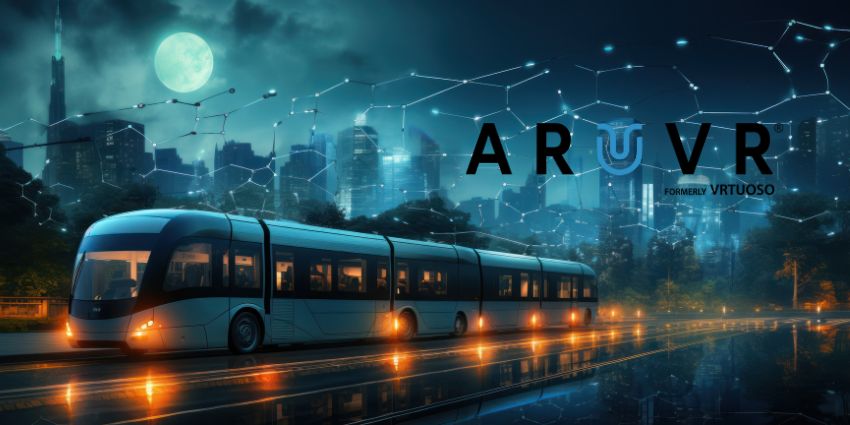Demand for digital twins is accelerating at an incredible rate. As Industry 4.0 continues to evolve, and new technologies like 5G and AI emerge to improve twin capabilities, adoption is increasing. By 2030, analysts believe the market for digital twin tech will be worth over $136 billion.
As this space expands, new trends are emerging in the landscape, shaping how companies embrace and use digital twin technology.
Innovations, technologies, and business models aren’t just improving digital twin adoption. They’re also contributing an increased ROI from twin systems. Today, we’re examining some of the most significant trends worth watching.
1. Increasing IoT Adoption
The number of IoT-connected devices has increased drastically in recent years. As of 2023, experts predict more than 15.14 billion devices are linked to the Internet of Things.
This number continues to grow as companies from countless industries explore new opportunities with sensors, intelligent tools, and data-driven systems.
These solutions connect to IoT systems, collecting real-time data to help businesses improve performance and efficiency or reduce costs. As IoT devices expand, interest in digital twin solutions capable of aligning disparate data will increase.
2. The Integration of Digital Twins and XR
Digital twins, the metaverse, and extended reality technology increasingly work together in the modern world. Using twins and XR in tandem unlocks endless opportunities for business leaders. For instance, in virtual reality, digital twin technology can help companies create and optimize virtual versions of products in a collaborative setting.
This can help to minimize the waste and costs associated with building physical prototypes and even accelerate time to market. In the AR and mixed reality industry, smart glasses and intelligent wearables can also benefit from digital twin technology.
Companies can use these resources to remotely guide employees through fixing a machine or troubleshooting a performance issue. The result is improved productivity, efficiency, and fewer in-office overhead costs.
3. Artificial Intelligence in Digital Twins
AI is having a substantial impact on virtually every aspect of the modern business world. The latest stats indicate the market for artificial intelligence will reach almost 2 trillion dollars by 2030. Digital twins and AI can work together in a variety of ways.
AI-enhanced systems can automatically apply real-time fixes to products and solutions using machine learning and intelligent workflows. AI tools can also help companies to predict potential downtime and issues in advance, leading to fewer catastrophic events.
These tools can even be used to train AI, thanks to their vast data collection. They could even play a role in the development of generative AI solutions. These solutions can help companies rapidly innovate and ideate new ideas based on vast data.
4. Digital Twin Use Cases Evolve
As the technology used to create and optimize digital twins evolves, these solutions’ use cases are also transforming. For instance, in the past, twins were often used in the engineering and manufacturing landscapes.
They were also common in the development of smart cities and public services. However, the variety of types of twins available means companies can also explore other opportunities. For instance, process twins can help enterprise companies to improve business efficiency and productivity.
They can allow leaders to analyze risks and potential issues in the business environment, allowing for faster growth and fewer operational problems. Companies can even create hybrid twins to assist with industrial asset management, predictive maintenance, and supply chain optimization.
5. Enhanced Security Awareness
The connection between digital twins and the Internet of Things has created concerns for business leaders. Many traditional IoT devices lack the security standards and solutions to protect business data in today’s evolving world.
As the threat landscape evolves, digital twin vendors must take a new approach to secure systems. There’s likely to be a growing focus on finding ways to preserve, encrypt and manage digital data and intellectual property.
This will become even more complex as digital twin tech and the metaverse become more intertwined. Digital twin vendors may need to work with the cybersecurity market to explore innovative strategies and opportunities for data preservation.
6. Evolving Blockchain Opportunities
Global blockchain investments are expected to grow by around $19 billion by 2024 and could significantly impact the future of digital twins. The rise of the metaverse blockchain will lead to more significant integrations between blockchain tools and industrial systems.
Already, innovators are exploring opportunities related to “BlockTwins,” which connect blockchain technology with process mining, RPA, and twin systems. These solutions can capture and store transaction details on the blockchain, supporting supply chain agility.
Blocktwins could also empower companies to transform physical assets, such as manufacturing products and machines, into NFTs, which can then be traded on the metaverse. Most importantly, the blockchain will potentially improve data security and transparency for simulated models.
7. Increased Emphasis on Sustainability
One of the significant benefits of digital twins in the modern world is their ability to enhance business processes. Not only can these solutions make companies more productive and efficient, but they can improve sustainability too. This is crucial now that 85% of consumers say they prefer shopping with sustainable or eco-friendly brands.
Digital twin solutions can help companies ensure compliance with sustainability goals, monitoring and optimizing energy consumption. They can lead companies to more environmentally friendly production decisions. For instance, these tools can track and assess the sustainability of materials.
The same tools can also help to rebuild sustainable cities following natural disasters and help experts determine the relationship between events. Some companies could even use digital twins to analyze and forecast their projects’ environmental and financial outcomes.
The Evolution of Digital Twin
Digital twins are increasingly advancing as companies seek new ways to leverage data in the business ecosystem. As connectivity technology evolves, we’ll likely see innovations emerging in this landscape.
For instance, 5G and edge-based cloud computing could empower even smaller businesses to take full advantage of digital twin technology. In the age of digital transformation, the right twin technology could influence every part of our world.







